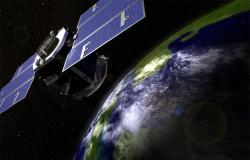SUMMARY: The Mars Sample Return mission, an endeavor crucial to the advancement of science, is confronted with financial and logistical challenges that mirror the historic tribulations of the James Webb Space Telescope. Tightening budgets and strict deadlines have led to a concerning situation, echoing past struggles with complex and costly NASA projects like the Webb Telescope, which ultimately achieved stellar success despite similar setbacks.
Once teetering on the brink of cancellation due to bloated budgets and prolonged delays, the James Webb Space Telescope has since emerged as a beacon of success, surpassing expectations and capturing the fascination of the world. At a recent meeting on astronomical advancements, project scientists disclosed the telescope’s commendable performance, which was initially received with skepticism due to its hefty price tag and belated launch.
Presently, NASA’s Mars Sample Return mission treads a precarious path akin to that of the JWST, facing financial pressures and potential cancellations. Last year marked a critical juncture, with the Senate demanding a feasible plan to adhere to the stipulated budget or facing the mission’s discontinuation. An independent review further reduced the optimism by casting doubts on the launch timeline and budget constraints.
In 2010, the JWST faced a similar dilemma when Congress nearly defunded it, criticizing its financial mismanagement. An independent evaluation credited the overrun costs to an unrealistic initial budget, a lesson that advocates for the Mars Sample Return now recall in hopes of redirection.
With the Mars mission still in the balance, enthusiasts look expectantly to NASA for solutions that could replicate the JWST’s turnaround from troubled project to astronomical triumph, all while navigating the added complexities of running concurrent, resource-intensive missions like the Artemis moon program.
The Mars Sample Return Mission: Industry and Future Prospects
The Mars Sample Return mission is a pivotal project within the planetary science community, aimed at retrieving samples from the Martian surface and returning them to Earth for detailed analysis. This mission, undertaken by NASA in collaboration with the European Space Agency (ESA), is poised to revolutionize our understanding of the Red Planet’s geology, atmosphere, and potential for past life.
The aerospace and defense industry, which encompasses entities dedicated to the design, production, and service of spacecraft and technologies for space exploration, is closely associated with missions such as the Mars Sample Return. The development and execution of these missions involve a broad cohort of industry players, ranging from established aerospace giants to private sector newcomers. This industry has been historically known for its high-cost projects and the need for extensive periods of research and development.
Market Forecasts and Issues
According to market analysts, the global space economy is growing, with the potential to exceed $1 trillion in the next two decades. This trajectory is fueled by the entry of private companies and increased government investments in space exploration initiatives. consequently, the prospects for missions like the Mars Sample Return are optimistic in the context of a market that is more welcoming of ambitious space ventures.
However, this industry is not without issues. The financial viability of such massive projects is a perennial concern. The cost overruns that plagued the James Webb Space Telescope are symptomatic of deep-rooted challenges in managing complex, innovative projects. These challenges include technological uncertainties, the intricacies of international partnerships, and the difficulties of keeping projects within budget and on schedule.
Furthermore, competition for funding within NASA is an added complication. With programs like the Mars Sample Return vying for resources alongside other major initiatives such as the Artemis program, which aims to return humans to the Moon, there are concerns about the prioritization of mission funding.
Outlook for the Mars Sample Return Mission
As the Mars Sample Return mission progresses, stakeholders are hopeful that NASA applies the lessons learned from the James Webb Space Telescope to avoid similar pitfalls.
The successful execution of the mission will have far-reaching implications, not only in the realm of scientific discovery but also in validating the robustness of collaborative international space projects. Such initiatives serve as a beacon of human ingenuity and technical prowess, bolstering the industry’s profile on the global stage.
For further information about NASA and its missions, you can refer to the official NASA website with the following link.
Strategically, all eyes are on NASA to ensure that the Mars Sample Return mission does not repeat the history of the JWST but rather uses that experience to navigate safely through the tight shoals of financial restraint and complex logistics to achieve another landmark success in space exploration history .
Jerzy Lewandowski, a visionary in the realm of virtual reality and augmented reality technologies, has made significant contributions to the field with his pioneering research and innovative designs. His work primarily focuses on enhancing user experience and interaction within virtual environments, pushing the boundaries of immersive technology. Lewandowski’s groundbreaking projects have gained recognition for their ability to merge the digital and physical worlds, offering new possibilities in gaming, education, and professional training. His expertise and forward-thinking approach mark him as a key influencer in shaping the future of virtual and augmented reality applications.







